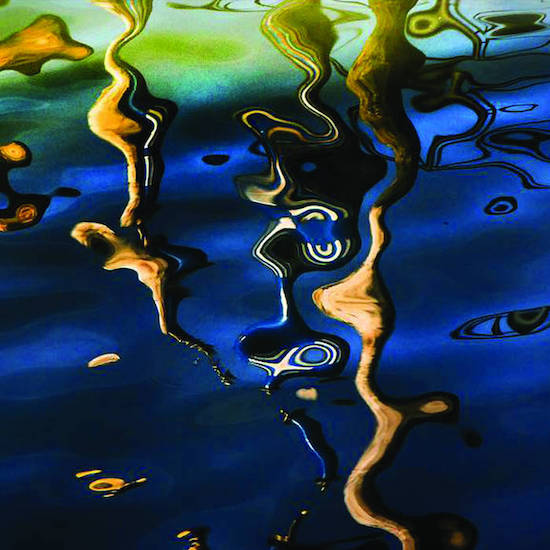"What does a creek sound like?" asks Kate Carr with Fake Creek. While her work often focuses on environmental recording and the sonic qualities of mundane objects, she takes a different approach here, reflecting on the imprints places leave in the imagination.
As the London-based Australian explains in the liner notes for the eighteen minute piece: "This is a live performance of me attempting to sound like an underwater field recording of a creek. I have spent many years recording waterways, and here I thought to try and sound like one, emulating the snap of shrimp, the grunting of fish, and the mysterious rustles and groans I so often have enjoyed listening to underwater."
Fake Creek captures the convergence of flows and temporalities in watery environments. A gently fluctuating mass of texture underpins discrete but repeating events created from a palette of "a straw, nails, beads, bird horns, a whisk, steel wool, a small branch, rocks, a hollow log, a small drum and a zither." Two timespans converge, the slowly evolving and the over-in-a-flash. The linear and the cyclical.
It feels irrelevant to guess which particular flotsam and jetsam, flora and fauna Carr’s array of sound sources mimic. Her work deals in the gaps language and image can’t touch. The experiences a written description or a photograph could never convey. The sonic marks of a place that can’t be translated. By isolating those sounds, she draws attention to how they weave into memory, location and perception. This approach to sound is a thread running through her work, whether its focusing on Brixton’s battle with gentrification, bicycles, or a major roundabout. But it comes across especially clearly on Fake Creek.
On his 2020 album Swamps/Things, Kassel Jaeger, AKA François Bonnet, ruminated on the swamp he visited as a child. A different ecosystem to Fake Creek, it nevertheless makes for an interesting comparison. Although intricate, Bonnet’s swamp feels submerged, an emotionally fraught, slow-moving miasma. More impressionistic perhaps than Carr’s piece, it also feels zoomed out, as though Bonnet is condensing entire life cycles into compositions. Carr seems to grab a snapshot, a momentary glimpse, and stretch it out so we can explore its full effect. Part of that is perhaps down to the different subject matter, but it also reflects different modes of processing a place.
Fake Creek simulates the effect of closing your eyes and listening to an environment. But the album’s title also makes clear this is only a subjective emulation. That adds something different to what a straight up field recording would. More than an act of sonic transportation, it challenges the listener – is this what you hear when you think of a creek? Carr might have composed a fake, but the elements of the watery sound world she chooses to shine a magnifying glass on are instructive.


